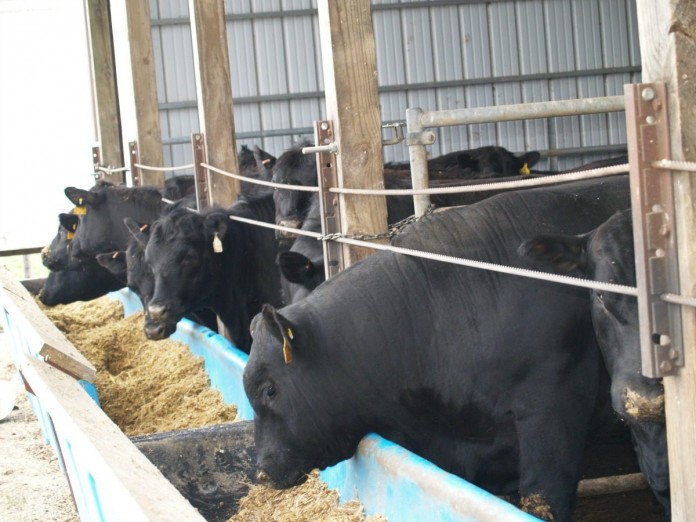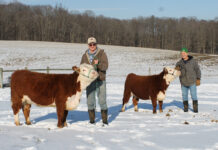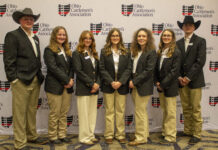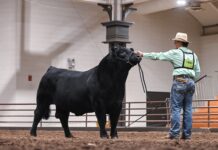MANHATTAN, Kan. — The mess is in the details, so people say.
This is how Glynn Tonsor, Kansas State Research and Extension livestock economist, refers to the latest events surrounding the United States’ mandatory country-of-origin labeling program.
Tyson, the largest U.S. meat processor, announced mid-October that it would not accept Canadian cattle ready for slaughter due to additional costs from more stringent U.S. country-of-origin labeling regulations.
“The reality is, (COOL) is a net economic drain on different parts of the system,” Tonsor said. “Tyson’s announcement is reflecting that.”
2009 policy
COOL, a controversial U.S. food and agricultural labeling policy, has been in limbo since its mandatory implementation in 2009.
The policy requires that most fresh foods, including meat, indicate the country or countries where the product was born, raised and slaughtered on the product’s label.
Not long after the mandatory implementation, Canada and Mexico approached the World Trade Organization (WTO) to challenge COOL, as the countries believed the law hindered trade with the United States and violated the North American Free Trade Agreement.
The WTO sided with Canada and Mexico, which led to the United States revising its COOL policy last May.
Latest revision
The revised policy required more specific labels on beef, pork, poultry and lamb products sold in stores. This means packers have to list individually the countries where the animal was born, raised and slaughtered.
While some groups challenged this revision, a U.S. district judge upheld the revised policy in September.
This ruling was broadly considered a win for advocates of mandatory COOL and a loss to U.S. meat packers and others wanting to abolish the policy, who view COOL as a low benefit, high cost scenario.
More specific labels
The revised policy, developed in May and upheld in September, had a six-month grace period for implementation.
Tyson’s announcement to stop accepting Canadian slaughter cattle came just before the grace period expired, as the expiration is approaching mid-November.
Before the final rule revision, a label for a package of beef sirloin steak from a steer born and fed in Canada and processed in the United States, for example, might have read, “Product of Canada and the United States.”
The revised label for that same package of beef would now be required to say, “Born and raised in Canada, and slaughtered in the United States.”
Tonsor, who has studied the COOL policy immensely as it relates to meat products, said the operating costs for Tyson facilities near the Canadian border are going up simply because they are being required to carry more labels to be compliant with the revised rule.
“I’m not speaking for Tyson, but it makes sense that if you do not see added benefits you would try to reduce some of your product flow choices to reduce the cost of carrying those different labels,” Tonsor said.
What’s it matter?
The implications of the Tyson announcement are different for cattle feeding and processing in the northwest part of the United States versus Kansas and the Midwest, Tonsor said.
“We’re not directly impacted in Kansas, but indirectly all of this is germane,” Tonsor said. “Politically, it is germane for farm bill discussions and potential trade retaliatory discussions. We all need to care about that, regardless of where we operate.”
Potential feedlot impact
Alberta is home to one of the major beef production areas in Canada, Tonsor said, which currently has too little processing capacity compared to feedlot capacity. Historically, that is one of the main reasons why the United States has processed Canadian cattle. While Alberta works to expand its processing capacity, which Tonsor said is currently happening, a lurking question remains.
More Canadian feeders?
If Tyson will not accept Canadian slaughter cattle, will there be an influx of Canadian feeder cattle coming into the United States?
Tyson’s announcement only related to finished cattle, not feeder cattle. It will continue to purchase Canadian-born cattle sent to U.S. feedlots, which could increase exports of feeder cattle into the United States.
U.S. feedlots in the southern plains might benefit, in the short term, from increase of feeder cattle, Tonsor said.
“I could paint a story where initially they would benefit,” Tonsor said. “Those are animals that could be coming farther south than they did before for two reasons. One is, they don’t have the processing capacity in Canada right now to handle them all, and a major processing facility in Pasco, Wash., is not eligible to accept slaughter cattle per this announcement (from Tyson).”
But, Tonsor said it is hard to say if U.S. feedlots would see a net gain in the long term.
“Long term, that isn’t a free adjustment,” he said. “I expect prices to adjust. I expect processing capacity in Canada to change.”
As farm bill negotiations continue in the U.S. legislature, Tonsor said, COOL is one of the topics being discussed, which could also have major implications to cattle feeding and processing in the United States.














Yes COOL labeling. Consumers want too know where their food comes from and if it is safe. They need to know….